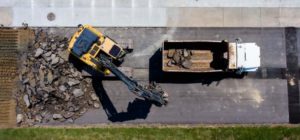During the 1930s, reticulated sewerage systems were installed on a budget with combined drains servicing up to three homes commonly installed. That means allotments in many of Brisbane’s pre-war inner city suburbs may have this type of drain, being a shared connection to the sewer. This means each allotment doesn’t have its own sewer connection directly from the sewer main.
So how does being on a combined drain affect you? If you are planning to renovate your home and it’s connected via a combined drain, you could be restricted to no increase or only a small increase in the number of plumbing fixtures (i.e. a toilet, sink, bath, tap or shower). In some cases, you must be taken off a combined drain and required to establish a new, separate connection. If you need to come off and abandon the combined drain and extend the sewer main you will require the approval of the other property owners.
If you are looking to subdivide your land, and you are currently connected to a combined drain, you will need all affected property owners to consent to works through their property. For a subdivision all lots must have a sewer connection from a sewer main so where there is a combined drain an extension to the sewer main is required. If this is not possible due to inability to obtain consent from neighbours, you will not be able to subdivide the site.
An engineer can help you review the property’s sewer connection and the impacts your plans might have as well as estimate costs of required works.
Wilkinson Shaw & Associates’ Principal Engineer Kym Wilkinson says that an engineering review of any proposed subdivision is always recommended as part of the due diligence process to identify the constraints that might apply.
Disclaimer: While every effort has been made to provide accurate information, Consult Planning does not guarantee that this blog article is free from errors or omissions or is suitable for your intended use. Requirements and standards frequently change so every individual proposal should be thoroughly investigated.








